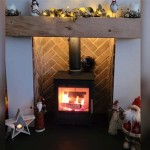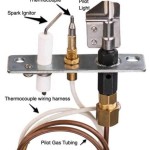The Art and Importance of Fireplace Trim Around Hardwoods
Hardwood flooring and fireplace combinations are a timeless aesthetic, providing warmth, character, and a focal point to any living space. However, the intersection of these elements requires careful consideration, particularly concerning the trim around the fireplace. The purpose of fireplace trim around hardwoods extends beyond mere aesthetics, encompassing safety, protection, and integration of design elements.
The selection and installation of trim around a fireplace laid on or against hardwood flooring involves understanding various factors, including the type of hardwood, the fireplace design, local building codes, and personal preferences. Improper trim can lead to safety hazards, such as heat damage to the flooring, or detract from the overall visual appeal of the space. Therefore, a thoughtful and informed approach is essential.
Safety Considerations: Shielding Hardwoods from Heat
One of the primary functions of fireplace trim around hardwoods is to act as a thermal barrier. Fireplaces, especially wood-burning ones, generate significant heat. Direct exposure to this heat can cause hardwood flooring to warp, crack, or even ignite. The trim provides a buffer zone, dissipating heat and preventing it from directly impacting the flooring. Materials used for fireplace trim, such as non-combustible stone, tile, or specially treated wood, are specifically chosen for their heat-resistant properties.
The distance between the fireplace opening and the hardwood flooring is critical. Building codes often specify minimum clearances to ensure safety. The trim helps to maintain these clearances, preventing accidental contact between hot embers or sparks and the combustible flooring. This is particularly important for raised hearth fireplaces, where the distance between the firebox and the floor is minimized.
Furthermore, the type of fireplace influences the choice of trim. Gas fireplaces, while generally producing less radiant heat than wood-burning fireplaces, still require protective trim. Electric fireplaces, while considered safer in terms of direct heat, can still generate localized warmth that, over time, can damage hardwood floors. The trim serves as a preventative measure, regardless of the fireplace type.
Aesthetic Integration: Blending Functionality with Design
Beyond its functional role, fireplace trim contributes significantly to the overall aesthetic of the room. It acts as a visual bridge between the fireplace and the surrounding hardwood flooring, creating a cohesive and harmonious design. The choice of trim material, style, and finish can either complement or contrast with the hardwood, depending on the desired effect.
For example, a traditional fireplace might be paired with a classic wood trim that matches the tone and grain of the hardwood flooring. This creates a seamless and elegant look. Conversely, a modern fireplace might be complemented by a sleek, minimalist tile or stone trim, providing a contrasting element that highlights the fireplace as a focal point. The possibilities are endless, allowing homeowners to customize the trim to reflect their personal style and preferences.
The size and shape of the trim also play a crucial role. A wider trim can create a more substantial visual barrier, while a narrower trim offers a more subtle transition. The shape of the trim, whether it is a simple rectangular profile or a more ornate, decorative design, can further enhance the overall aesthetic. Consideration of the room's architectural style and existing design elements is key to selecting the appropriate trim.
Protection and Maintenance: Extending the Life of Hardwood Floors
Fireplace trim also serves as a protective barrier against physical damage to the hardwood flooring. The area around a fireplace is susceptible to spills, scratches, and wear and tear. The trim acts as a buffer, preventing direct contact between the flooring and potential sources of damage. This is particularly important in high-traffic areas or homes with children or pets.
Furthermore, the trim can simplify maintenance. It is often easier to clean and maintain trim materials, such as tile or stone, than hardwood flooring. This means that spills and dirt can be easily wiped away without the risk of damaging the flooring. The trim also provides a clear boundary, making it easier to define and protect the area around the fireplace during cleaning and maintenance routines.
Regular inspection of the fireplace trim is essential to ensure its continued functionality and aesthetic appeal. Cracks, chips, or other damage should be addressed promptly to prevent further deterioration and maintain the integrity of the trim. Proper sealing and maintenance of the trim material can also extend its lifespan and protect the hardwood flooring from potential damage.
The selection and maintenance of fireplace trim around hardwood flooring require a balanced approach, considering both safety and aesthetics. A well-chosen and properly installed trim can protect the flooring from heat and damage while enhancing the overall visual appeal of the space. By carefully considering these factors, homeowners can create a fireplace area that is both functional and beautiful.

Elegant Hardwood Moldings For Fireplace Hearths

A New Transition In The Living Room Home Moyaone

Trim Detail Around Fireplace Floor Flooring Molding

Edging For Flooring Around Fireplace Mumsnet

Diy Fireplace Finished Addicted 2 Decorating

Seal Around The Fireplace Hearth

Transition Moldings Unique Wood Floors Fireplace Hearth Installing Hardwood Burner
Fireplace Trim Options Hardwood Floor Diy Home Improvement Forum

Diy Fireplace Part 5 Trim Grout And Mantel Addicted 2 Decorating

Help How To Trim Fireplace Gap After Floor Install
Related Posts








